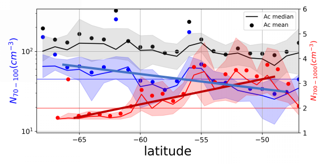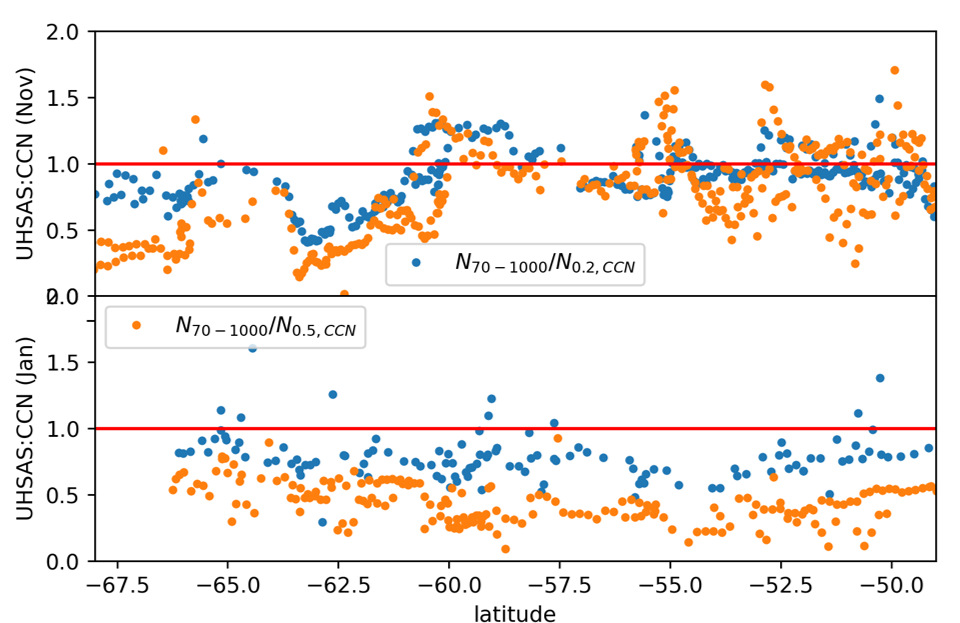62°S witnesses the transition of boundary-layer marine CCN and INPs
Submitter:
McFarquhar, Greg — University of Oklahoma
Area of research:
Aerosol Properties
Journal Reference:
Science
Over the pristine Southern Ocean (50°S–68°S, 63°E–150°E), data acquired during the 2017–2018 Measurement of Aerosols, Radiation, and Clouds over the Pristine Southern Ocean (MARCUS) Experiment show that small aerosol particles suspended in the air, particularly those that can act as cloud condensation nuclei (CCN) and ice nucleating particles (INPs), strongly depend on season and latitude. The concentrations of both CCN and INPs vary more with season than latitude, and have greater concentrations over the summer South Southern Ocean (62°S–68°S).
Impact
The energy balance over the Southern Ocean (50°S–68°S, 63°E–150°E), particularly close to the ice-covered Antarctic where previous observations are scare, is heavily influenced by the aerosol particles suspended in the air through the absorption and scattering of radiation and through interactions with clouds. The concentrations of both CCN and INPs vary more with season than latitude, and are more plentiful over the summertime South Southern Ocean (62°S–68°S) than the North Southern Ocean. This has implications for understanding energy balance close to the Antarctic Peninsula.
Summary
The average North Southern Ocean CCN number concentration at 0.2% and 0.5% supersaturation were 28% and 49% less than that over the South Southern Ocean (SSO), which is caused by a decrease of small-accumulation-mode aerosols (with diameters (D) between 60 nm < D < 100 nm). This is related to the change of the size distribution and chemical composition of CCN-active particles with 60 nm < D < 1,000 nm, which is associated with varying CCN sources over different regions. The concentrations of ice nucleating particles (INPs) over the SSO were lower than those farther north, but there were greater fractions of biological INPs, particularly during January and February, over the SSO. The heating treatment and organic carbon digestion treatment of the INP suspensions prior to immersion freezing testing reveals that INPs originate from primarily organic and biological sources. The seasonal dependence of INPs over the NSO is stronger than over the SSO and could be associated with a seasonal shifting of biological proteins and organics from wind-wave interactions.



